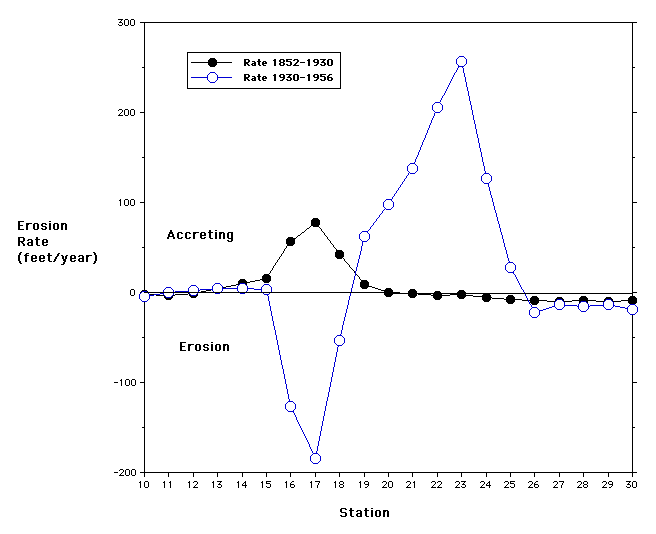
The plot that follows uses the 122 year erosion/accretion rates that were used by Morton and Pieper in their 1975 publication.
Note that the area from stations 13 to 25 exhibit a positive 122 year accretion rate. This is the area noted in yellow on the Morton and Pieper map shown previously. Given what you learned about variations in erosion/accretion rates over time at Station 18, it would be wise to extend that analysis to the neighboring stations as well.
In the following plot the erosion/accreting rates for 78 year interval from 1852 to 1930 and the 26 year interval from 1930 to 1956 are plotted for stations 10 to 30.

From 1852 to 1930 this interval of the shoreline was undergoing erosion averaging less than 10 feet per year except for the stations 13 to 20. Note the location of these stations on the map to the right.